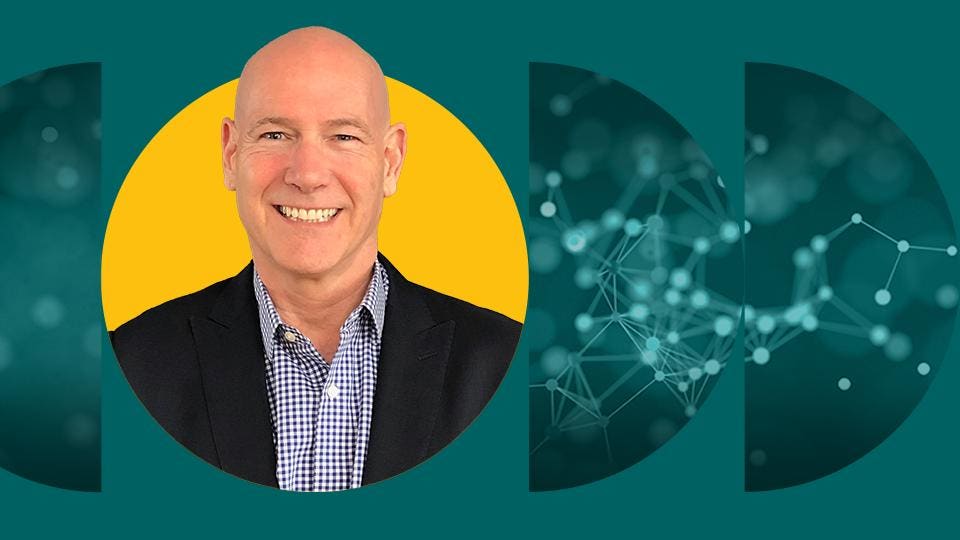Exploring Public Markets Impact Investing With Eric Rice
Eric Rice is an impact investing innovator known for architecting Global Impact, the world’s first diversified public-markets impact investing strategy that invests in companies whose goods and services help address the world’s greatest problems.
Until recently, Rice was Head of Impact Investing at BlackRock, and before that, an investor at Wellington Management for over 20 years, a World Bank country economist, and a diplomat in Rwanda with the U.S. Department of State. Rice is now the newest Senior Fellow at Sorenson Impact Institute. Within this role, he will have the opportunity to share what he’s learned throughout his career thus far, mentor and learn from the next generation of impact investors and social entrepreneurs, and imagine and help guide the future direction of impact investing.
In this conversation, Rice reflects on his early career, shares how impact investing has changed in the nearly ten years since he launched Global Impact, and offers his predictions for the next decade of impact investing, considering increased public awareness, the generational transfer of wealth, and an expanding menu of investment offerings.
What inspired you to get involved in impact investing? What pivotal moments solidified your belief in the power of impact investing?
Long before impact investing existed, I started my career in international development, a mission-driven and sort of proto-impact field. When life took me to Boston in the late 1990s, my best career option was a move into finance. Fund management was exciting, of course, but it fell completely short on the dimension of purpose. A decade in, I started hearing from friends and acquaintances about their social enterprises or impact-investing strategies — all in private markets. I was intrigued and wanted to be part of it. However, since my experience was exclusively in public markets, I would have to invent impact investing in public markets.
Coming into public markets impact investing was pivotal for me. I needed to determine what impact would look like in public markets: Are there enough listed impact companies to invest in? Can this be done with integrity? Can it be catalytic? (Mostly not.) Can it be additional? (Absolutely, if you’re determined.) What forms of engagement make sense? This preceded the UN SDGs, so I had to enlist colleagues to help me identify those impact themes where companies could make a difference.
The next challenge was whether anyone would be interested in investing – would we be meeting an unmet investor need? This was also pivotal since we surprised the many doubters at our then-employer by getting a resoundingly positive response: We quickly raised over a billion dollars with no track record for the fund and no history of public markets impact investing. Institutional investors, especially in Europe, proved to be hungry for authentic impact investing in public markets.
And finally, there’s the difference we make for our investee companies. I never anticipated that we would be such a multifaceted resource to our investees. They’ve been eager to learn from our team about impact and ESG, of course, and best practices in areas like business strategy, fundraising, and international expansion.
How has impact investing changed in the ten years since Global Impact launched?
The most significant change is that impact investing has gone mainstream and scaled up dramatically. When we started, the prevailing view was that impact investing could only happen in private markets. The roots of impact investing were in finance to micro and small enterprises and people with low incomes, followed later by private-equity impact investing. By definition, this relegated impact investing to the wealthy, those who could invest at least a million dollars and lock up their funds for seven years, and it severely constrained the pools of capital available to be mobilized.
A second significant change is the introduction and broad acceptance of global and national standards for impact investing. Advances by and coordination among various institutions — the IFC, UNDP, the EU, SASB, the GIIN, and the Impact Management Project – have helped tame what was formerly a “wild west” of impact-washing and greenwashing.
How has the world broadened its perspective of public markets impact investing? How has Global Impact influenced the growth and development of the field?
For those of us seeking values alignment but who could only invest in listed securities, the only available mechanism was “socially responsible investing” — exclusionary screens, which later evolved into ESG investing and environmentally-themed funds. What sense did it make that impact investing was only for the wealthy, especially when we understood the enormity of the capital required to achieve the U.S. Sustainable Development Goals and the Paris Climate Accord targets?
Global Impact’s main contribution has been demonstrating to the financial sector that it is possible to apply and adapt the precepts of impact investing to public markets. We showed that the impact ecosystem could be scaled with integrity.
How do investors achieve impact through public equities? How does this differ from the private markets?
Impact investing is built on a foundation of additionality. For all forms of impact investing, additionality derives primarily from the social and environmental outcomes created by investee companies. The differences have to do with the channels by which an impact investor helps shape its investees’ success. There is unquestionably a meaningful dividing line between seed/venture funds and all other impact investors since the earliest-stage funds are really “in the trenches” with their investees, shaping their successes and preventing derailments, and because they account for many of the most catalytic investments.
Private equity and public markets investors will never have this life-and-death involvement with our investees. And yet, there is plenty of scope for any portfolio team to support investees’ financial and impact successes and foster the development of the broader impact-investing space. Moreover, public markets offer two things the private markets can’t: they’re big enough to match the enormity of the world’s great challenges; and anyone can invest in them, not just big institutions.
What future trends, opportunities, and challenges in impact investing do you foresee over the next ten years?
I’ll start by pointing out that ten years is a very long horizon for this young area of investment. With that caveat in mind, I’d start by forecasting the obvious: the rapid growth of impact investing is highly likely to continue. Impact investing will enjoy three big structural tailwinds: increasing public awareness, the generational transfer of wealth, and an expanding menu of investment offerings.
My second forecast is a fast-growing menu of investment offerings. I expect more tailored solutions, such as specialized single-thematic impact funds. While there is already a variety of innovative emerging-markets impact funds, these are small and don’t include many asset classes – the application and adaptation of developed-country solutions to emerging markets is overdue. I am confident that it is coming. Investment in diversity, equity, and inclusion is still in its infancy, and it’s tricky to do well (simply investing in diverse management teams does not ensure impact!); I expect to see innovations that provide a well-articulated theory of change. We’ll see even more cases of investee companies assuming functions traditionally relying on cash-strapped governments, like infrastructure, healthcare services, and primary and secondary education.
Third, the world’s development finance institutions are just beginning to reorganize themselves to better address climate change and the US SDGs. I predict this will lead to many forms of partnerships with private investors.
Fourth, impact engagement remains a loose concept that is very unevenly implemented. In the coming years, I expect that asset owners will demand that investment managers articulate and implement more strategic engagement approaches.
Fifth, philanthropy will continue to be changed by the precepts of impact investing. Philanthropy is already adopting more of an investing vocabulary and orientation, with awareness of recycling of capital, quantified impact outcomes, and requiring a specified return on investment. I expect that we’ll see more charities setting out their IMM strategies and co-investing with impact investors.
Finally, I look for more and smoother transitions from catalytic stages of investment (seed and venture) to growth stages (private equity, private debt, and public markets). Today, we lack sufficient institutional infrastructure to ensure that impact enterprises graduating from the venture-funded stage get the capital they need to grow and continue pursuing their mission.
Read the full article here










